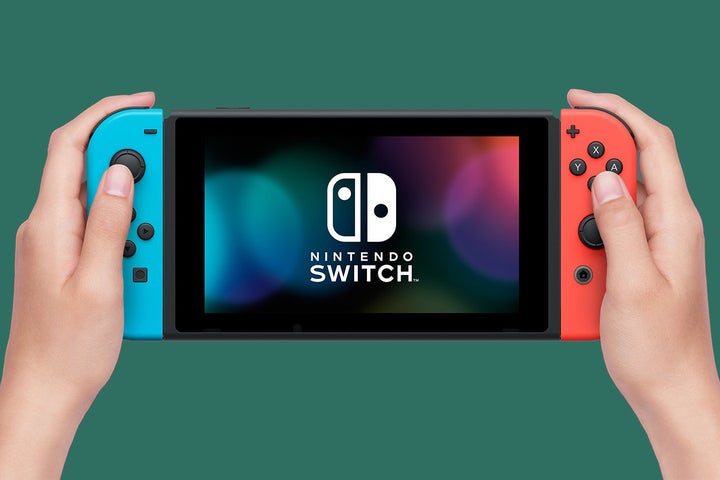
The Nintendo Switch is not like other video game consoles. It’s not as powerful as the PS4 Pro or Xbox One S, nor is it as pocketable as the Nintendo 3DS.
It is the pure definition of finding a middle ground: A games console that’s both a portable and home device.
Capable of being played in the hand and yet in an instant thrown up onto your TV it is a truly remarkable proposition. The real question that needs to be answered however is whether being two things makes the Switch a bundle of compromises, or a bundle of versatility.
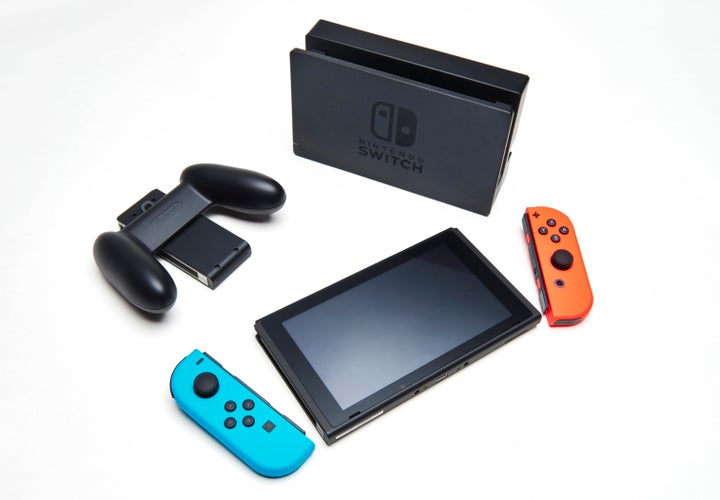
To give you some idea of whether this is a console you should be rushing out to buy we’ll focus on the hardware and software that kept us enthralled, and infuriated for the last two weeks.
Let's start with the hardware itself. The Switch is essentially a small, powerful tablet device with two wireless JoyCon controllers that attach either side turning it into a handheld games console.
For playing in TV Mode, you have the Dock, a light plastic cradle that when connected to the Switch turns it into a home games console. A JoyCon grip then transforms both controllers into something that looks more akin to the controllers you’d find on the Xbox and PlayStation.

Pick the Switch up in its handheld mode for the first time and you’ll be struck by two things. Firstly it’s actually lighter than you imagine, and secondly it feels a lot more ‘grown up’ compared to previous Nintendo products.
Gone are the glossy coatings from Nintendo’s previous products, instead these are all matte finishes and dark minimalist touches. We’ll be honest it’s a design we’re completely in love with because it somehow combines the playfulness of Nintendo with a more modern, slick design. This then is as much a console for adults as it is for kids.

The Switch itself has everything you would normally expect from a portable console. It charges via USB-C, there’s a headphone jack and games are either downloaded via the Nintendo eShop or played in classic Nintendo fashion using a physical cartridge.
On the back you’ll find a flip-out stand that will feel flimsy. Nintendo says this is intentional so that if it’s knocked and the stand is bent it will easily spring off and can be reattached. It’s not entirely reassuring news so instead we’ve just been extra cautious. Behind the stand is a microSD card slot that can, theoretically, support up to 2TB cards.
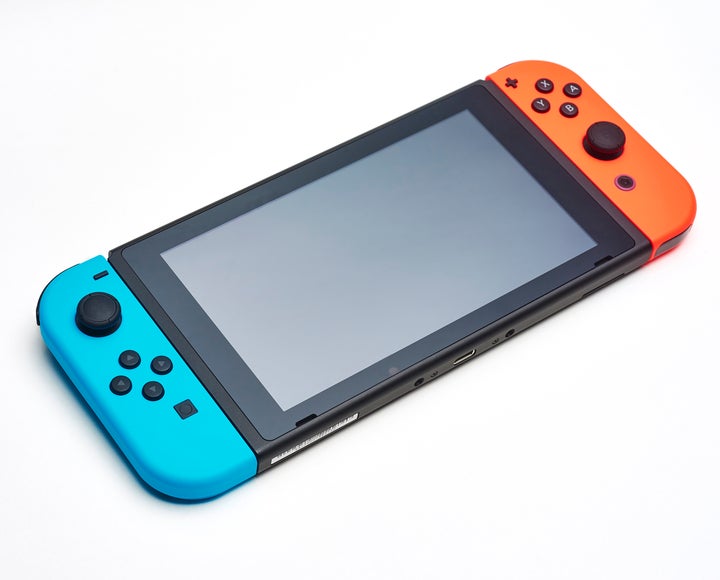
The screen is a 6.2-inch 720p display that’s clear, bright and more than good enough for gaming on the go. If we have any complaints it is that it’s almost unusable in direct sunlight. You’ll also want to buy a screen protector. If Nintendo’s suggesting you can shove this in your bag then it’s bound to get scratched and considering the screen is the console you’ll really want to look after it.
On either side of the Switch are the JoyCons. These are Nintendo’s pride and joy and without them the Switch would be just a screen.

They’re light, nimble little motion-sensitive controllers that when detached can be used in a number of ways. One example being that they can be turned on their side and used for two-player multiplayer.
The idea behind this is simple: Imagine going to the park, detaching the controllers, putting the Switch stand out and then playing Mario Kart against your friend.
Another scenario is using them as boxing gloves against an opponent who also has two JoyCons.
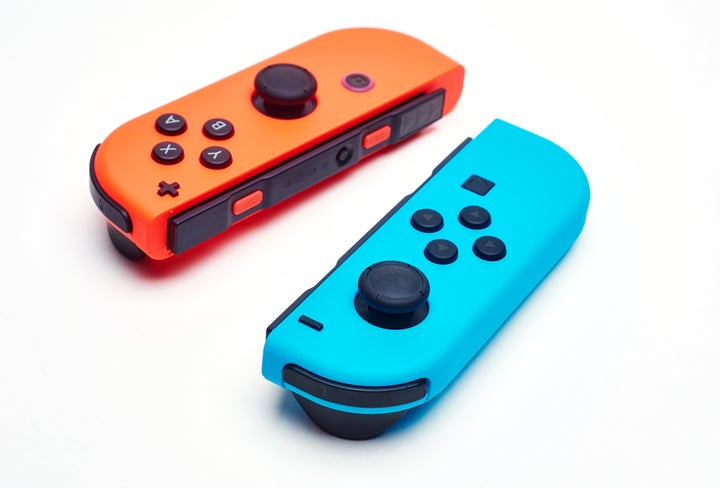
In addition to being motion sensitive they also contain an NFC sensor for using with Nintendo’s small plastic Amiibo toys, an IR sensor for detecting objects in front of it and finally a HD Rumble system. That is in essence an ultra-realistic vibration motor that lets you feel objects inside the controller.
By packing so much technology inside these tiny controllers Nintendo have made their first misstep. The JoyCons are a compromise. You see in order to make sure that they work on their own sideways, the controls are asymmetrical.
This would be fine except the size of the Switch means playing games like Zelda (where accuracy and speed are key) can sometimes feel more difficult than it should.
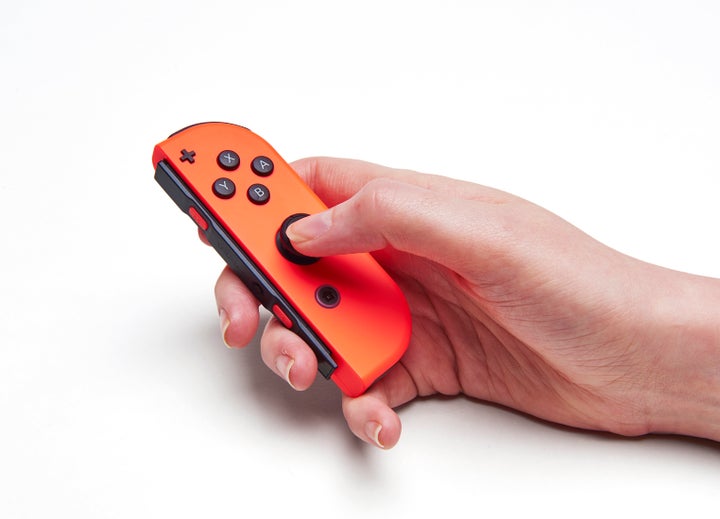
They are also, and here’s the real stinger, £74.99 for a second pair or £42.99 each. That’s a baffling amount of money, especially when you realise just how delicate they really are.
With so much technology packed inside of them they truly are a marvel, albeit ones that will need protecting with your life.
Now we turn to the software. Nintendo’s menus for its devices have always been a matter of taste. From the busy, convoluted designs of the Wii and Wii U to the simple but bafflingly slow user interface on the 3DS.
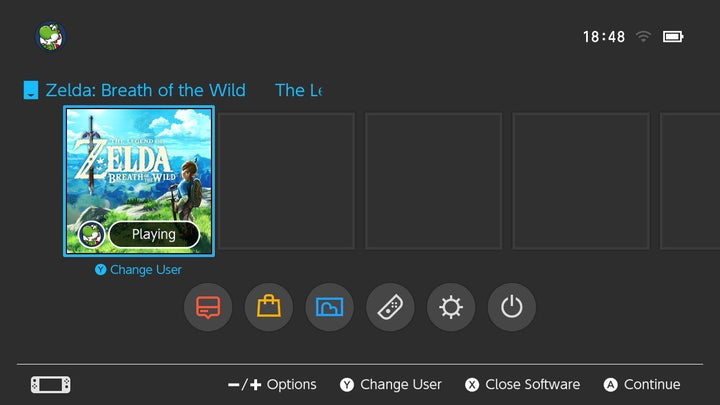
The Switch then, is a revelation. Gone are the childish graphics, or infuriating loading screens simply so you can view the ‘Settings’ menu. This is crisp, clean and grown-up in all the right places.
Games are displayed with simple clean box art while the bottom buttons give you three software choices and three hardware choices.
There’s a choice between a light and dark theme and then discretely placed in the top left-hand corner is your profile icon - a small flash of colour in an otherwise deeply minimalist menu.
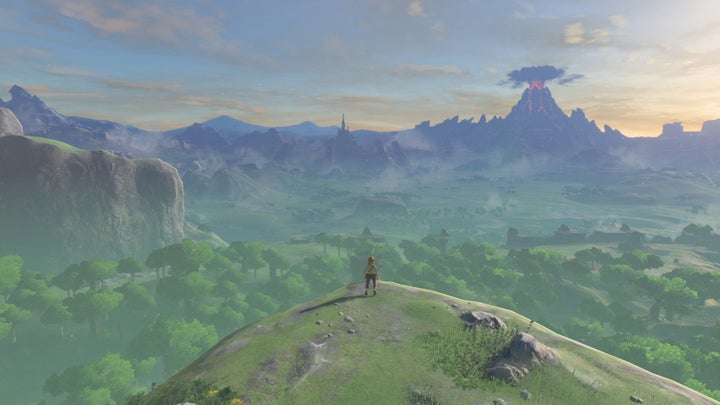
Finally there’s the games themselves. We were only sent Zelda and Just Dance which should give you some hint as to one of the Switch’s biggest hurdles, but we’ll get onto that in a second.
It’s hard to truly know the full extent of what the Switch is graphically capable of. Zelda’s art design hides many of the Switch’s potential limitations but what it does show is that it is an incredibly powerful handheld console.
Zelda’s game world is vast, and aside from a few frame-rate hiccups the Switch seemed to plough through its stunning vistas with relative ease.
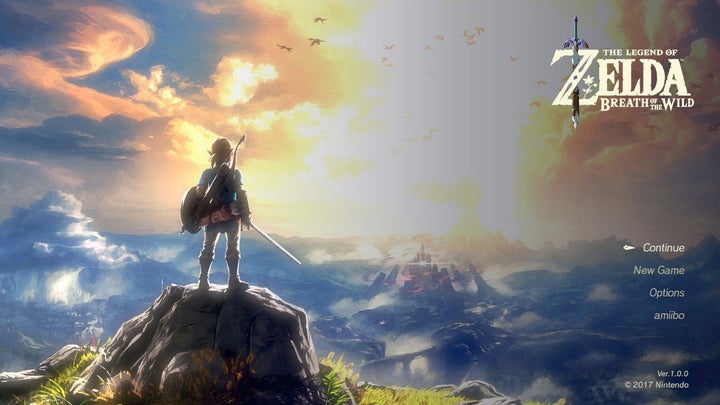
Be warned though, while Zelda will look gorgeous on your 6.2-inch screen the Switch cannot hide its graphical limitations on the big screen. It still looks beautiful but lets be clear, this is not Horizon Zero Dawn in 4K.
Finally there’s the battery life. Nintendo says that on the go the Switch will average around 3-6 hours depending on the game. In our experience this is pretty much spot on. The console’s standby battery life is also particularly impressive.
Nintendo has always been known for making decisions that don’t run parallel with the rest of the video game world. While Sony and Microsoft were fighting over themselves to cram in the pixels Nintendo was releasing consoles like the Wii, 3DS and of course the Wii U.
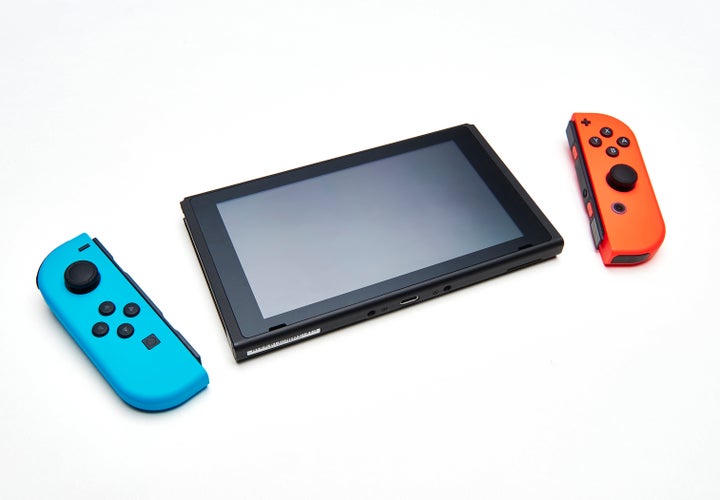
The Nintendo Switch then, is a continuation of this time-honoured tradition where Nintendo looks at the gaming world and says: “It’s time for something different.”
It’s this level of bravery that has resulted in the company creating some of the best consoles (and games) in the world. It has also led to them creating some of the worst.
While the 3DS kept Nintendo’s stock healthy it took a financial battering over the Wii U to such an extent that the Switch didn’t just have to be classic Nintendo, it also had to actually be good too.
Is it good?
Honestly, the answer to that question could change in 18 months. So much of the Switch feels untested yet. We haven’t seen a game that takes full advantage of the IR scanner. Unlike its previous three consoles there’s no ability to play classic Nintendo titles yet. The online subscription service similar to that found on PlayStation and Xbox isn’t live, and won’t be until late Summer.
Many of the games that Nintendo showed off including Skyrim, Lego City, Splatoon 2 and more won’t be available until, you guessed it, Summer.
At the moment the Switch feels like raw, untapped potential, waiting to be exploited and enjoyed. Sure there’s Zelda, and in a few weeks Mario Kart but until we’ve seen the full potential of the Switch being utilised it’s hard to recommend that everyone rush out this second and spend £280 of their money.
Who should buy the Nintendo Switch?
Right now? Early adopters and die-hard Zelda fans. The Switch is a truly revolutionary console and for Nintendo fans in particular there’s much to look forward to. With a powerful line-up of indie games in the works this could also draw in many gamers who had previously bet all their money on PlayStation’s Vita.
Who shouldn’t buy the Nintendo Switch?
Anyone who’s even slightly in two-minds about the Switch. There are a mere handful of games at launch, only one of which could actually be classed as a blockbuster. Nintendo has done little to try and alleviate this in the same way that its rivals did by announcing a healthy range of either remastered or older games available immediately on the new console. Wait a year though and the Switch could just be something truly special.
The Nintendo Switch is available now for £279.99
